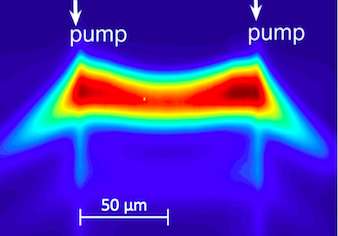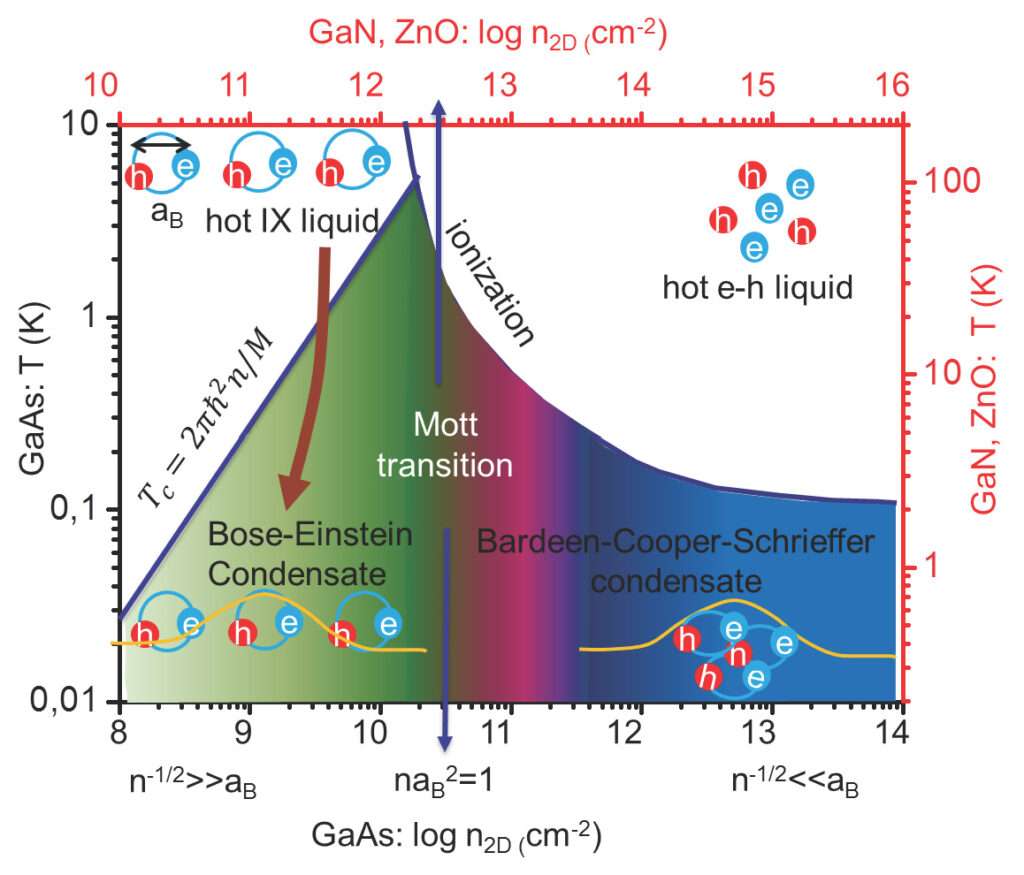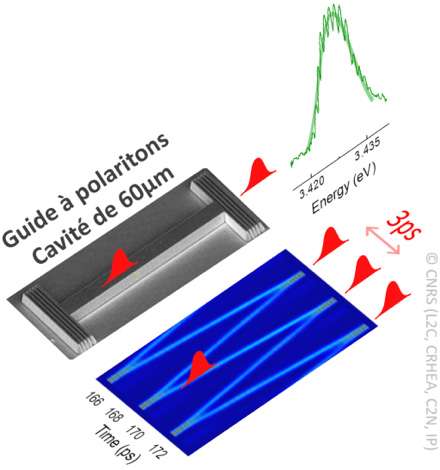Collective states in semiconductors

We explore a wide range of collective quantum states, from nuclear and electronic spins to indirect excitons and polaritons, investigating their dynamics, correlations, elementary excitations, and phase transitions.
Unlike the individual particles that compose them, these collective states are strongly influenced by particle–particle interactions, quantum statistics, and their coupling to a reservoir, which can give rise to exotic equilibrium states or strongly out-of-equilibrium regimes. To study them, we have developed a broad set of nonlinear spectroscopy techniques and hyperspectral imaging methods, enabling us to track their spatial and temporal dynamics.
This research theme is structured around two main axes:
- Indirect excitons
- Polariton condensates and polariton lasers in GaN and ZnO waveguides and microcavities
Indirect excitons :

Indirect excitons in coupled quantum wells are long-living quasiparticles, explored in the studies of collective quantum states. At low density, decreasing the temperature of the exciton liquid leads to BEC. At higher densities and low temperatures a phase separation is predicted between Bose-Einstein and Bardeen-Cooper-Schrieffer -like condensates.
The figure shows the phase diagram of an electron-hole system in temperature/density plane. Left and bottom scales stand for GaAs-based systems, right and upper scale for GaN and ZnO.
References :
- Physical Review B, 2023, 108 (12), pp.125421. ⟨10.1103/PhysRevB.108.125421⟩ https://hal.science/L2C/hal-04251300v1
- Physical Review B, 2022, 106 (3), pp.035429. ⟨10.1103/PhysRevB.106.035429⟩ https://hal.science/L2C/hal-03759667v1
- Physical Review B, 2021, 103 (4), pp.045308. ⟨10.1103/PhysRevB.103.045308⟩ https://hal.science/L2C/hal-03014825v2
Recent theses :
- ARISTEGUI Remi (2021-2025)
- CHIARUTTINI François (2017-2020)
Polariton condensates and polariton lasers in Gan and Zno waveguides and microcavities :
Polariton condensates in microcavities provide an ideal platform for exploring the physics of collective quantum states. GaN and ZnO semiconductors, thanks to their strongly bound excitons, enable the generation and control of these condensates at room temperature.
Since 2011, we have demonstrated the first ZnO polariton laser, followed by room-temperature polariton condensation in microcavities with dielectric mirrors. We have also measured the complete phase diagram of these lasers.
Our work includes 2D imaging of the condensate in both near- and far-field, as well as comparison with numerical simulations of its spatial dynamics.

Currently, we are exploring new geometries of polaritonic waveguides (illustrated in the adjacent figure), aiming to create a polariton laser operating under electrical injection and to control the formation of optical solitons.
In this geometry, we have already demonstrated continuous-wave laser operation at 70 K, achieving high gain in very short cavities with minimal optical pumping length. From 150 K to 300 K, we observed a pulsed regime with mode-locking, associated with cavity soliton formation.
Preliminary measurements of electrical injection in doped waveguides are also underway using a new electroluminescence setup coupled with optical spectroscopy.
References :
- Applied Physics Letters, 2011, 99, pp.161104. ⟨10.1063/1.3650268⟩ https://hal.science/L2C/hal-00633265v1
- Optica, 2024, 11 (7), pp.962-970. ⟨10.1364/OPTICA.524753⟩ https://hal.science/L2C/hal-04776451v1 et actualité CNRS https://www.inp.cnrs.fr/fr/cnrsinfo/augmenter-la-frequence-dun-microlaser-impulsionnel-grace-aux-polaritons
- Physical Review Applied, 2022, 18 (4), pp.044029. ⟨10.1103/PhysRevApplied.18.044029⟩ https://hal.science/L2C/hal-03521600v2
- Physical Review Applied, 2020, 14 (5), pp.054060. ⟨10.1103/physrevapplied.14.054060⟩ https://hal.science/L2C/hal-03034132v1
Recent theses :
- SOUISSI Hassen (2020-2023)
- DEVELAY Valentin (2022-2025)
Our funded projects on this theme :
- ANR IXTASE
- Projet Région DINAMITE (“Quantum Technology in Region Occitanie” project, 2021-2024) : DIpolar excitons hosted by Nitride-bAsed heterostructures for eMergIng quantum staTEs; Thèse de Rémi Aristégui
- ANR NEWAVE
- Labex Ganext projet Comb-on-GaN ; Hassen Souissi’s thesis